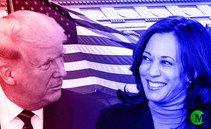Trump continues to launch proclamations and ideas to stimulate the US economy, often through poorly detailed plans. What has the tycoon promised so far in the economic field?

With the election campaign now in full swing for the US elections in November, Trump’s proclamations and announcements - more than his programs and projects - to relaunch US industry and the economy continue.
Faced with Harris’s surprise entry into the race for the White House - which some polls now indicate is ahead - the tycoon is multiplying his efforts to attract consensus and cast his opponent in a bad light. The field in which the battle to the last vote has become more fierce and thorny is, obviously, the economic one.
Trump’s ideas on how to stimulate the US economy are partly already known - since they follow what was decided during his presidency - and partly more extreme and, at times, bizarre. All the promises made so far by the Republican candidate on the economic issue. What impact would they have on American power?
What is Trump promising to revive the U.S. economy?
The latest promise in chronological order launched by Trump to reinvigorate the American manufacturing system is this: attract foreign companies to the United States by offering them access to federal lands.
Until now, Trump has mostly framed his economic approach with measures to punish companies that move their operations abroad. But on Tuesday, September 24, he said he was ready to reveal incentives for foreign companies to leave other countries and set up shop in the United States. The former president wants to personally recruit foreign companies and invite them to shop on American soil.
It is unclear how likely it is for a president to offer perks to foreign companies, as analysts noted in an article in AP. The Bureau of Land Management has restrictions on foreign entities seeking to lease land. Trump’s campaign did not immediately respond to a Monday night inquiry into whether Chinese companies would be excluded, given his longstanding accusations that China is hurting American companies.
This is just one of the latest in a series of high-profile and opaque statements from the tycoon. On Monday, Trump threatened to hit U.S. tractor maker John Deere with a 200% tariff if the agricultural manufacturer shifted production to factories in Mexico.
“They announced a few days ago that they are going to move a lot of their manufacturing to Mexico,” the Republican nominee said at a political roundtable in Smithton, Pennsylvania.
“I’m just putting John Deere on notice right now: If you do that, we’re going to slap a 200% tariff on anything you want to sell in the United States,” Trump, who has made tariffs a key economic policy focus of his campaign, said.
The Republican nominee has proposed 10%-20% tariffs on all $3 trillion in annual imports, with a 60% rate for goods from China.
Trump also wants to extend the tax cuts he crafted during his presidency when they expire at the end of 2025, to further reduce the corporate income tax − to 15% from the current 21% − and exempt Social Security benefits from income taxes. These proposals would increase debt by $5.8 trillion over 10 years, according to the Penn Wharton Budget Model.
Finally, Trump has promised to remove all illegal immigrants from the country — and the workforce — through “the largest deportation operation in our country’s history”.
This will likely create labor shortages in immigrant-heavy sectors, such as agriculture. “This kind of disruption is likely to be inflationary, for the fairly obvious reason that if there are fewer workers and we need to pick apples, or whatever, the supply side of the economy will suffer,” some analysts wrote.
Overall, the mix of tariffs, tax cuts, and anti-immigration translates into a threat to inflation, economists say. It remains to be seen how Trump will actually translate his sometimes extreme economic ideas into actionable measures.
Original article published on Money.it Italy 2024-09-24 15:39:23. Original title: Tutte le idee di Trump per rilanciare l’economia Usa





